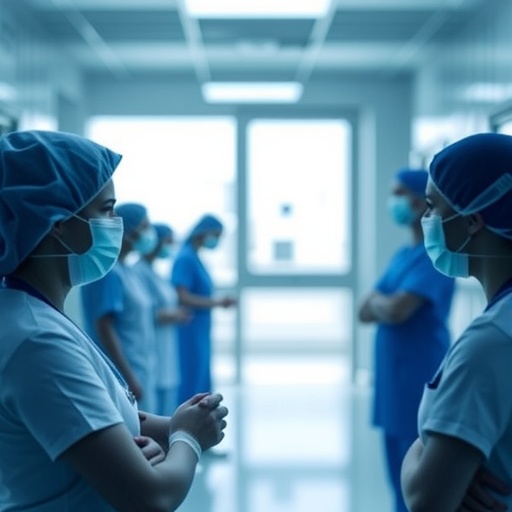Researchers at University of California San Diego School of Medicine have found a new way to block a root cause of pain. The key is a naturally occurring protein called apolipoprotein A-I binding protein (AIBP). AIBP binds to toll-like receptor 4 (TLR4), a protein that sits on the surface of cells like an antenna, searching for signs of infection or tissue damage. The researchers found that treating mice with a single spinal injection of AIBP — and thus switching TLR4 "off" — prevented and reversed inflammation and cellular events associated with pain processing.
As reported May 29 by Cell Reports, the treatment alleviated chemotherapy pain in mice for two months with no side effects.
"Opioids and most other pain medications simply dampen a person's perception of pain. But the source of the pain is still there," said co-senior author Tony Yaksh, PhD, professor and vice chair for research in the Department of Anesthesiology at UC San Diego School of Medicine. "At the same time, opioids also impart a feeling of pleasure, which leads to their misuse and addiction. What's so special about our new approach, inhibiting the TLR4 receptor with AIBP, is that it actually modifies the pain processing systems themselves. So, if you think of neuropathic pain as a disease, then we see this as truly disease-modifying. We're blocking the underlying mechanism that causes pain, not just masking the symptoms."
Historically, Yaksh said, researchers thought inflammation and nerve injury were separate events. But a few years ago, he, co-author Maripat Corr, MD, and collaborators found that sometimes inflammation can transition to chronic pain with all the hallmarks of nerve injury — a cellular event that involves TLR4.
This latest advance got its start three years ago when Yaksh attended a symposium where Yury Miller, MD, PhD, professor in the Department of Medicine, and now co-senior author of the study, was talking about his work on lipid metabolism and atherosclerosis. Yaksh, whose lab studies pain, realized they were both looking at TLR4, but for different reasons. Out of that chance interaction, the two started working together.
"My specialty is atherosclerosis, the underlying cause of heart attack and stroke, and we had been studying AIBP as a means to treat that condition," said Miller. "And it worked — the study is now published in the Journal of Lipid Research. But we were also surprised to find that at the same time AIBP prevented and reversed chronic pain states. When Tony saw those results, he told me it was remarkable how effective it was."
In laboratory tests, the researchers discovered that AIBP inhibited TLR4 by removing cholesterol from lipid rafts — cholesterol-rich areas of a cell's membrane that help control how cells communicate with each other and their environments. In mice, spinal (intrathecal) injections of AIBP reduced lipid rafts in central nervous system immune cells called microglia. The injections also reduced TLR4 activation, microglial activation and inflammation in the spinal cord.
After chemotherapy, humans and animals often develop persistent states of pain in response to even the lightest touch. In this study, mice that received chemotherapy reacted to the lightest touch. But a single intrathecal injection of AIBP completely reversed the chemotherapy-induced pain state and the mice were able to endure normal levels of mechanical stimulation. This pain-relieving effect lasted for two months and the AIBP injection did not affect motor functions.
"We are working on ways to deliver AIBP systemically, but if it comes down to a choice between living with chronic pain or getting a spinal injection once every few months, we think most people would take the injection," Miller said. "As it stands now, AIBP could be developed as therapy for unremitting severe pain that only responds to high dose morphine. AIBP would remove the need for opioids, and reduce the potential for drug abuse."
According to Yaksh, of the 1.7 million patients who receive a cancer diagnosis each year, it is estimated that at least 39 percent experience pain in the course of the cancer and after treatment. If each of those patients takes an average 100 milligrams of morphine or its equivalent per day for one year, an estimated morphine burden would be approximately 24,000 kilograms per year — and that's just for patients with cancer.
"We're not saying we shouldn't use opiates to treat chronic pain or in particular cancer pain — that would be a tragedy," Yaksh said. "But it would also be a greater tragedy if we didn't support work to find a substitute for systemic opiates … if for no other reason to reduce its presence in our society."
###
Additional study co-authors include: Sarah A. Woller, Soo-Ho Choi, Dina Schneider, Roshni Ramachandran, Jungsu Kim, UC San Diego; Eun Jung An, Yun Soo Bae, Ewha Womans University, Korea; Hann Low, and Dmitri Sviridov, Baker Heart and Diabetes Institute, Australia.
Media Contact
Heather Buschman, PhD
[email protected]
858-249-0456
@UCSanDiego
http://www.ucsd.edu
http://dx.doi.org/10.1016/j.celrep.2018.04.110




